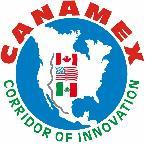|
|
||||||||||
CANAMEX CORRIDORSECURITY and SAFETY ISSUESOCTOBER 2003
BACKGROUNDIn 1999, the CANAMEX Corridor Coalition was established under a Memorandum of Understanding signed by the governors of Arizona, Nevada, Utah, Idaho and Montana to engage in planning and development projects of mutual benefit for the region. In 2001, they published the CANAMEX Corridor Plan, an assessment of the regionís transportation, telecommunications and economic infrastructure. The plan identified a series of bold initiatives to improve the security, safety and efficiency of the corridor and to stimulate job growth including the establishment of the CANAMEX Smart Corridor.
The goal of the CANAMEX Smart Corridor is to integrate the statesí transportation, emergency response and traveler information systems along the 1500 mile corridor.
CANAMEX was designated high priority corridor in the National Highway System Designation Act of 1995. As one of the nationís NAFTA corridors, CANAMEX plays a vital role in the movement of commerce, linking the major trade centers of the inter-mountain west with Canada, Mexico and California.
CANADA & MEXICOThe U.S. CANAMEX states maintain strong relationships among federal, state and provincial officials in both Canada and Mexico. In particular, Arizona and Montana have long and deep relationships with Mexico and Canada. The Mexican CANAMEX states as well as the Province of Alberta and the Canadian federal government have continued their strategic investment in transportation (road, seaports, air) and telecommunication infrastructure within the international CANAMEX Corridor.
In August 2003, President Fox and members of his cabinet once again affirmed support of CANAMEX and the importance of secure and efficient transportation infrastructure along the west coast of Mexico. The innovative CyberPort project in Nogales is one example of the high level of international cooperation as it uses technology and a re-engineering of the border crossing process to shift physical inspection processes away from the border to encourage redundancy within the enforcement process. For more information, visit the website: http://tpd.az.gov/reports/index.html#cyberport03
PROBLEM STATEMENTMany well known American symbols (Grand Canyon, Arches, Salt Lake, Yellowstone, Glacier) are located on or adjacent to the CANAMEX Corridor. In the event of an emergency, these treasures have few emergency resources close at hand. Man-made structures, like the Hoover Dam and the Las Vegas strip, would require coordinated resources from a multi-state region (AZ, CA, NV, UT).
The vastness of the CANAMEX region challenges emergency responders: the large tracts of public lands, incomplete cellular and radio coverage, inadequate broadband infrastructure and the absence of rural response plans in many outlying areas. The CANAMEX Smart Corridor project is an effort to address these gaps in a coordinated manner so as to achieve seamless and timely response among and between the states in order to achieve the highest level of preparedness.
Percentage of Federal & Native American Lands
PROPOSAL The CANAMEX Smart Corridor project has three elements:
The CANAMEX states are committed to ensure the safety and security of the Corridor. They are seeking federal support to establish a secure backbone within the inter-mountain west by integrating public information systems and private information sources.
CANAMEX has relationships in congressional delegations, state government (transportation, public safety, economic development tourism), federal land management agencies (parks, forest service, BLM, BOR), Native American Tribes, major airports, cities along the Corridor, and the private sector (motor transport industry, tourism and economic development officials).
CONTACTCarol Sanger, Executive Director CANAMEX Corridor Project 1801 W. Jefferson, Room 509M, Phoenix, AZ 85007. Tel: 602-712-4113 Cell: 520-266-0008 E-mail: csanger@dot.state.az.us Website: www.canamex.org |
||||||||||
